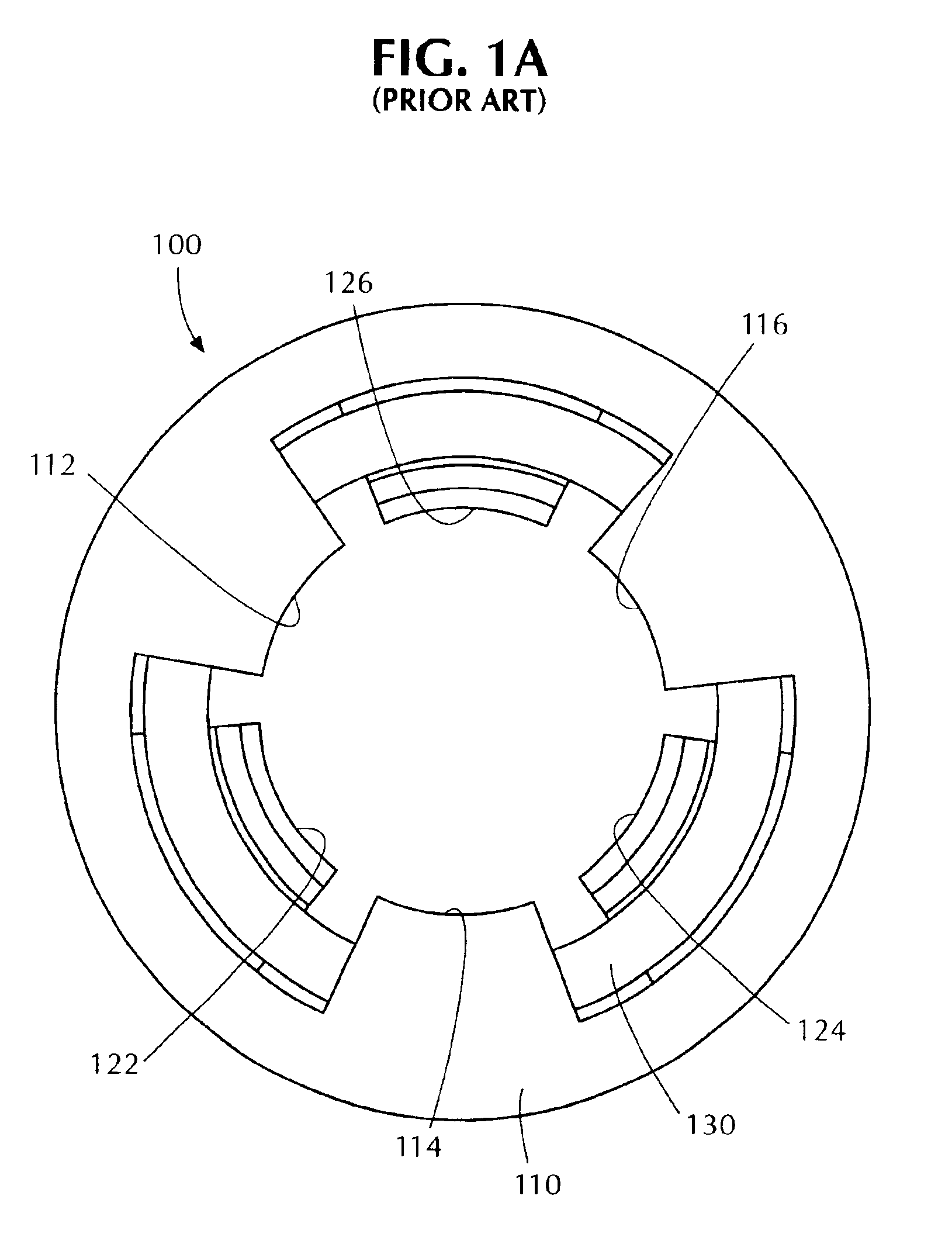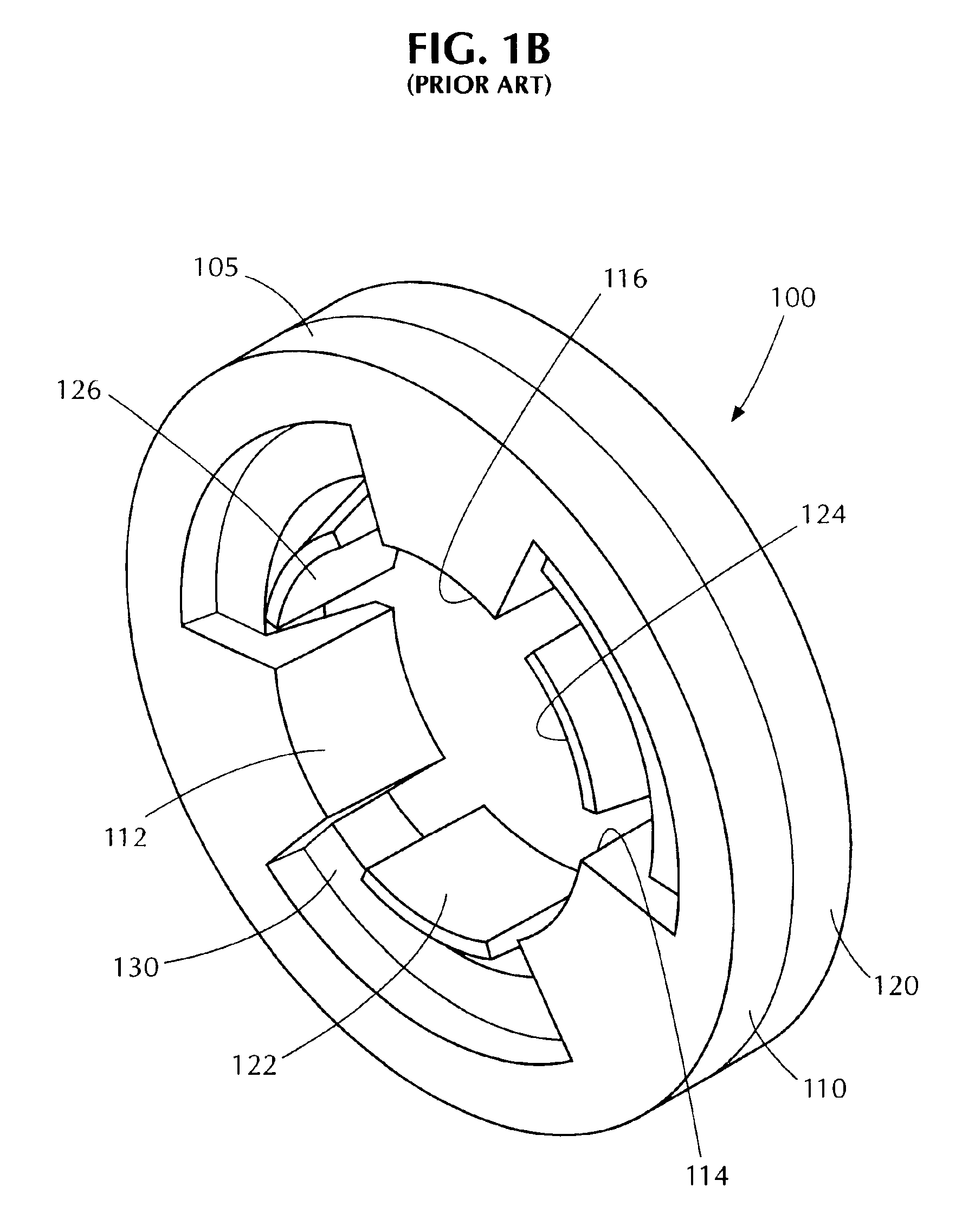Polyphase claw pole structures for an electrical machine
a technology of polyphase electrical machinery and claw poles, which is applied in the direction of dynamo-electric machines, electrical apparatus, magnetic circuits, etc., can solve the problems of less heat transfer efficiency, difficult assembly of these claw poles to the stack, and increased magnetic losses, so as to improve the production process, increase the effect of magnetic losses and reduce the cos
- Summary
- Abstract
- Description
- Claims
- Application Information
AI Technical Summary
Benefits of technology
Problems solved by technology
Method used
Image
Examples
Embodiment Construction
[0045]The embodiments of the present invention will be described in detail with reference to FIGS. 2A through 19B.
[0046]The electrical machine armature in this invention comprises a magnetic circuit component having one or more pieces and a polyphase winding with several coils. (FIGS. 2-12). The magnetic circuit component is preferably made from an iron-powder based composite magnetic material formed by pressing, molding or machining.
[0047]In this regard, it is not desirable to realize completely the magnetic circuit with a laminated material. Indeed, the circulation of an alternate magnetic flux in—three dimensions generates eddy currents in the sheets. However, it is possible to divide the magnetic circuit into several parts. The parts in which magnetic flux does not circulate in a plan (claws, corners) would be realized with a composite magnetic material, and the other parts in which the flux circulates in a plan (yoke, the bases of the claws) optionally could be made with a lami...
PUM
 Login to View More
Login to View More Abstract
Description
Claims
Application Information
 Login to View More
Login to View More - R&D
- Intellectual Property
- Life Sciences
- Materials
- Tech Scout
- Unparalleled Data Quality
- Higher Quality Content
- 60% Fewer Hallucinations
Browse by: Latest US Patents, China's latest patents, Technical Efficacy Thesaurus, Application Domain, Technology Topic, Popular Technical Reports.
© 2025 PatSnap. All rights reserved.Legal|Privacy policy|Modern Slavery Act Transparency Statement|Sitemap|About US| Contact US: help@patsnap.com



